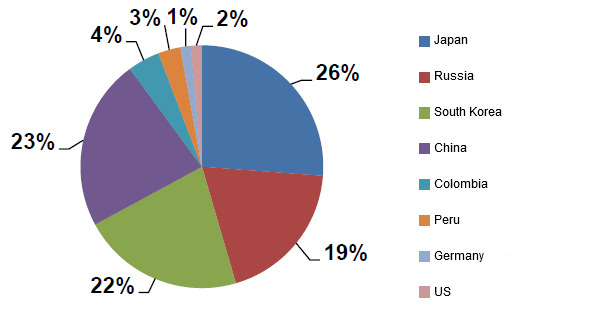According to the latest data of the Chilean Agricultural Studies and Policies Office (ODEPA), during the January-August period, a total of 293,000 pigs were slaughtered: a drop by 7.9% in comparison with the same period in 2013. The average weight up to August 2014 was 1.1% higher than in 2013, when the average weight was 100.2 kg per carcass, whilst in the period January-August 2014 it was 101,4 kg.
Regarding pork production, ten years ago it reached 410,000 tonnes, and during this last decade it has grown at an average yearly rate of 3.7%. According to the data available up to now (January-August 2014 period), the production reaches 348.000 tonnes, and this represents a drop by 6.9% with respect to the same period in 2013. This situation would be affected, among other things, by the effects of the closure of the agribusiness project Valle del Huasco in the town of Freirina by the end of 2012, because animals coming from that plant were still slaughtered during 2013. Another aspect that has an influence is the porcine reproductive and respiraroty syndrome (PRRS) outbreak.

Regarding the foreign trade, the pork exports accumulated up to September (without including offal) reached 88,500 tonnes. This entails a drop by 2.4% with respect to 2013. Nevertheless, as of the second semester, the exports have gained a remarkable energy, increasing every month, with even double-digit figures in some cases. This rise has been lead by the increase of shippings, especially to Russia, China and South Korea. Chile has taken advantage of the Russian embargo on agriculture and livestock products from the EU and US, among other countries. During the January-September period, the exports to Russia grew by 21.5% with respect to the same period in 2013.

Share of the different destinations of the Chilean pork exports (Jan-Sept 2014).
Tuesday, 18 November 2014/ ODEPA/ Chile.
http://www.odepa.cl/







